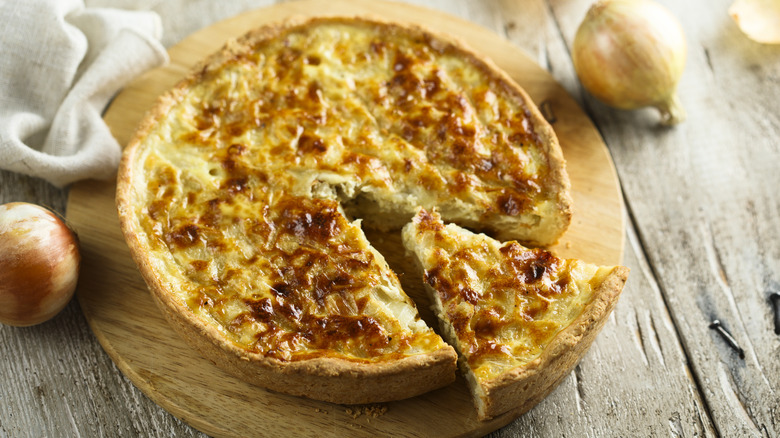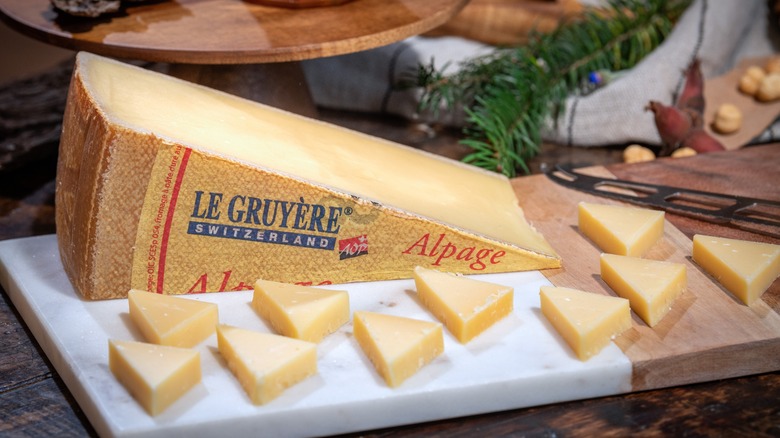Use Gruyère Cheese For The Creamiest Quiche
Quiche is a simple yet easily customizable meal option that gives savory breakfast an elegant, French-inspired charm. From meat-lover favorites like classic bacon quiche Lorraine to nutrient-packed loaded vegetarian quiche, there are endless ways to elevate your eggs — and adding cheese is at the top of the list. You just can't go wrong when adding cheese to eggs, but there is one variety that will make your quiche extra smooth and delicious: Gruyère.
Alpine in origin, Gruyère is named after Gruyères, a town in the canton of Fribourg in Switzerland. Made from whole cow's milk, Gruyère has a soft texture, a mild flavor, a high milk fat content, and a high water-to-oil ratio, making it exceptionally melty. This meltiness factor is what makes Gruyère the perfect cheese selection for wonderfully creamy quiche, all without overpowering the other flavors of the dish. Gruyère's ample moisture content aids the melting process, allowing it to blend with runny whisked eggs. Its balancing creaminess also helps keep your eggy custard from developing a tough, rubbery texture in the oven — a make-or-break point for your quiche.
Coupled with the right egg-to-milk ratio, adding Gruyère to your quiche creates a soft, thick texture for the best breakfast bite. An elevated quiche may seem more complicated than standard egg breakfasts, but with an easy preparation process and a few of your favorite ingredients, you can grace your breakfast table with a morning meal that lets cheese take the spotlight.
Find the right Gruyère for your quiche
Creamy with subtly sweet and earthy flavors, Gruyère is also a staple cheese for delectably dippable fondues, cheesy soups like French onion, melty sandwiches like croque monsieur, and yes, yummy egg custard. But how do you find the perfect Gruyère pairing for quiche? Well, the flavors are certainly a tasty consideration, but the real key is in the cheese's age and texture.
Gruyère begins its journey toward deliciousness as raw cow's milk, which is exposed to starter cultures and rennet so it will curdle. After cutting the curd into granules and heating them, cheese makers drain the whey and press the curd into wheels. The wheels are bathed in a salt brine, tended in a cellar for three months, then allowed to mature for between five and 18 months.
Young Gruyère cheeses — usually the varieties you find in the grocery store — are best for melting, because they have a higher water content than aged Gruyère. The older Gruyères (aged 10 months or more) develop a stronger flavor and an appealing darker yellow coloring, but they also dry out, giving them a grittier texture that's not ideal for melting; it's more likely to break down unevenly and create unappetizing oil pockets rather than mix smoothly into the surrounding egg custard in a quiche. So if you're looking for an extra creamy texture in the dish without overpowering cheese flavors, grate some young Gruyère and get melting!

